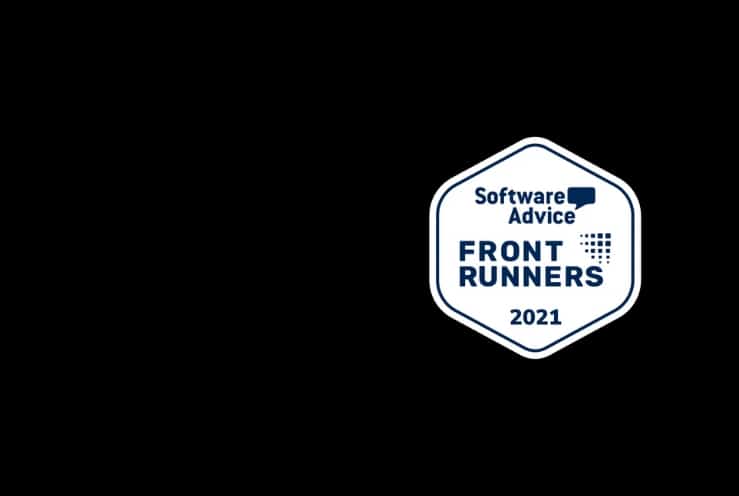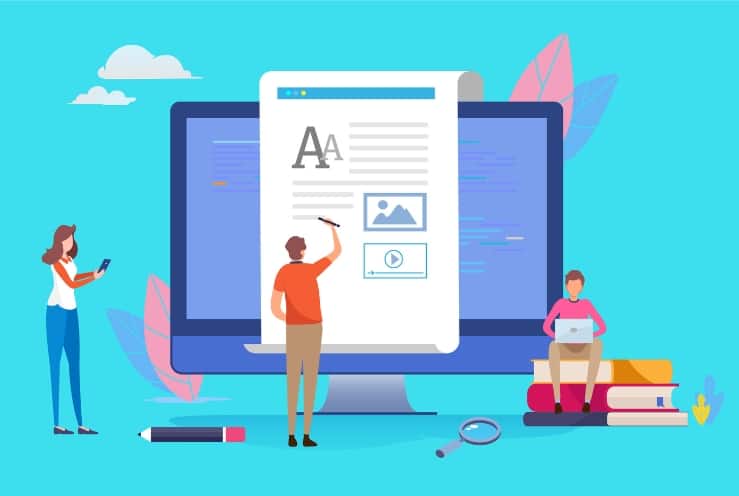
14 Promotional Message Examples to Capture Customers
Keeping in touch with customers is essential for any business looking to succeed. One of the most simple and effective methods is through promotional text messaging.
With an open rate of about 98%, text messages are an excellent way to talk directly to your customers. Whenever you’re announcing a new product, promoting a flash sale, or sending a birthday discount, SMS and MMS marketing are powerful tools that can boost customer engagement and increase sales.
In this article, we’ll showcase 14 examples of promotional SMS messages and explain the best practices for capturing attention and encouraging action.
What Makes a Successful Promotional Message
An effective promotional message is one that feels relevant, clear, and actionable to its audience. Below, we’ll explore the key elements of successful text message marketing so you can craft campaigns that resonate and deliver.
Clarity in Purpose
The foundation of any successful promotional message is having a clear purpose. Before crafting your message, you need to define its primary goal.
When the purpose of your message is clear, your audience immediately understands what you’re offering and what action you want them to take. A confusing or vague message can lead to hesitation, inaction, or even mistrust.
Audience-Centric Approach
The first step to crafting audience-focused messages is identifying who you’re speaking to. This involves considering factors such as:
- Demographics: Age, location, income level, and other basic details
- Interests and preferences: What products or services they find valuable
- Pain points: What problems your audience is trying to solve
For example, if you’re targeting young professionals, a message offering time-saving solutions might be more appealing than one focused solely on cost savings.
Personalization can also make your audience feel seen and valued. Small touches, like addressing the recipient by name or referencing their past interactions with your brand, can improve engagement.
Strong Call-to-Action (CTA)
Without a clear and compelling CTA, even the most well-crafted message may fail to deliver results.
The CTA should leave no doubt about what action the recipient needs to take. Ambiguous phrases like “Click here” or “Learn more” may not be as impactful as specific instructions like “Shop the sale now” or “Download your free guide.”
A CTA should stand out in the message, such as a button, bolded text, or a prominent link. Long, cluttered CTAs can confuse readers. Therefore, keep it short and place it where it’s easy to find.
Simplicity in Language
Overcomplicating your message with jargon or lengthy explanations can confuse your audience and reduce the likelihood of engagement.
You can break down complex ideas into shorter, digestible sentences. Long sentences can overwhelm readers, especially in a promotional context.
You may use everyday words that everyone can understand. If technical terms are necessary, explain them briefly.
It’s also ideal to choose words that your audience uses in daily life to create a connection and make the message feel natural.
Benefits Over Features
While features describe what your product or service does, benefits explain why it matters to the customer and how it can improve their life.
Highlighting benefits makes it easier for customers to see the value and take action. For example:
- Feature: “Noise-canceling technology in our headphones.”
- Benefit: “Enjoy uninterrupted music and focus, no matter where you are.”
Consistent Branding
When your branding is consistent, people can immediately identify your business, even without seeing your name or logo. Consistent branding helps customers feel connected to your business over time.
Your tone and style should reflect your brand personality. If your brand is playful, use a lighthearted tone. If it’s formal, keep the message professional.
When you’re creating an email, SMS, or social media post, the messaging should feel like it’s coming from the same source. You need to avoid changing the tone or style between platforms.
Easy-to-Find Information
When the important details are prominently displayed, your audience doesn’t have to guess or search. The quicker they can process your message, the better your chances of converting interest into action.
Place the most important details at the beginning of your message to let your audience know what you’re offering right away.
Structure your message so the details are logically arranged and easy to scan. You can use headings, short sentences, or visual elements like bold text to emphasize key points.
14 Promotional Marketing Message Examples
Here are 14 promotional message examples that you can use to draw in and keep your customers engaged.
1. Mobile Coupons
Mobile coupons are digital vouchers sent directly to a consumer’s smartphone or tablet, which can be redeemed at physical stores or online. They promote instant purchases and can be personalized based on the user’s location or purchase history. It is easy to add a picture of a coupon to a text message.
Examples:
“Enjoy a special 20% discount on seasonal clothing this weekend. Enter the code SEASON20 when shopping online.”
“Book your next appointment online and save $10 with our exclusive mobile coupon. Use the code RELAX10 at checkout.”
2. Product/Service Announcement
When announcing a new product or service, the message should be clear and engaging, perhaps including an image to showcase the product. It typically includes details like the product’s description, benefits, and how customers can purchase it or learn more.
Example:
“Introducing our new eco-friendly skincare line! Made with natural ingredients for beautiful, healthy skin. Available online and in stores starting this Friday.”
“Coming soon: Our new digital consulting service is designed to streamline your business processes. Stay tuned for the launch next Friday!”
3. Bundle Promo
One of the main appeals of bundle promotions is the perceived value they offer. Customers often feel like they are getting more for their money, which can be a compelling reason to purchase. Consider adding an image to make your message even more engaging.
Examples:
“Tech Trio Deal! Purchase our latest smartphone model and get a protective case and wireless earbuds at a 20% discount. Upgrade your tech in one go—the offer ends soon!”
“Refresh Your Space Bundle! Buy a set of curtains and get a matching throw pillow at half price. Perfect for giving your living room a new look. Available while stocks last.”
4. Daily Deals
Daily deals are offers available for just 24 hours. Like flash sales, they create urgency but happen regularly, encouraging repeated visits to a retailer’s website or store.
Examples:
“Start your day right! Today only, enjoy 25% off all coffee machines until midnight. Wake up and smell the savings!”
“Daily Fashion Fix: Get 40% off all designer handbags today. Act fast—the deal ends at midnight!”
5. Holiday Promotion
Holiday promotions often use seasonal themes and imagery that resonate with the holiday spirit. Like other sales promotions, holiday campaigns usually feature limited-time offers that create a sense of urgency.
Examples:
“Find the perfect gift this Valentine’s Day with our Sweetheart Sale! Enjoy 20% off all jewelry and get a free box of chocolates with every purchase over $75. Offer valid until February 14th.”
“Get ready to light up the 4th of July with our Star-Spangled Sale! Save 30% on all outdoor grills and patio furniture. Plus, receive a free American flag with your purchase over $100. Hurry, this offer ends July 4th!”
6. Personalized Promos
Personalized promotions are customized to each customer based on their shopping habits and preferences. These can be highly effective in increasing conversion rates by making offers more relevant to each customer.
Examples:
“We noticed you love historical novels! Here’s a 20% discount on our latest arrivals in the genre—just for you.”
“You’ve been eyeing stylish activewear lately—grab 15% off on our latest sports collection! Use code FIT15 at checkout.”
7. Flash Sale
A flash sale is a short-term discount or promotion offered for a limited time. It’s typically announced with little to no advance notice and lasts a few hours to a few days. Discounts during a flash sale are usually higher than a typical promo message to make the offer especially compelling.
Including an animated GIF along with the message can be very effective.
Examples:
“2-Hour Flash Sale! Save 50% on all winter coats. Ends at noon—don’t miss out!”
“Tonight Only: 30% off selected home essentials from 6 PM to midnight. Grab these deals while they last!”
8. Sales Alert
Sales alerts are useful for encouraging quick purchases and moving inventory, especially during peak shopping periods like holidays or seasonal sales. These alerts often include phrases like “for a limited time” or “while supplies last” to prompt customers to act quickly.
Examples:
“Big Savings Alert! Our annual summer sale starts next week. Up to 50% off on all outdoor furniture. Don’t miss out!”
“Holiday Countdown Deal! Just in time for the festive season, enjoy 30% off our entire line of kitchen appliances. Offer valid through December 5th—shop now before the holiday rush!”
9. Loyalty Program Invite
Loyalty programs encourage repeat business by rewarding customers for their continued patronage. Invitations to join these programs highlight benefits like discounts, points, or exclusive offers.
Examples:
“Become a Gold Member! Sign up for our loyalty program today and earn points for every purchase, redeemable for exclusive rewards.”
“Upgrade your shopping experience! Become an Elite Member for early access to sales, special birthday offers, and more. Join now to start enjoying the benefits!”
10. Pre-sale Promos
Pre-sale promotions allow customers to order a product before it is officially available. This can help businesses gauge demand and secure early revenue.
Examples:
“Pre-order the newest smartwatch model and save 15%! Secure yours now and be ahead of the tech curve!”
“Reserve your copy of the upcoming bestseller today and get an exclusive signed bookmark. Pre-sale ends soon—don’t miss out!”
11. Birthday Offer
Automated birthday messages are a thoughtful way to show customers you care about their special day. These personalized promotional SMS and MMS messages give customers special discounts or perks on their birthdays and enhance customer relationships through a personal touch.
Examples:
“Celebrate your birthday with us! Get a free dessert on your special day when you dine in. No strings attached—just show an ID!”
“It’s your birthday, and we’re celebrating! Enjoy 25% off your next purchase. Use your unique birthday code: BDAY25 at checkout.”
12. Online Event Announcement
This promotional message informs customers about an upcoming online event, such as a webinar or live product demonstration. The goal is to boost online engagement and participation.
Examples:
“Discover the latest trends in digital marketing with our expert panel. Tune in online this Wednesday at 6 PM EST. Reserve your spot now!”
“See our new kitchen gadget in action! Join our live demo on Friday at 12 PM EST. Register for free, and don’t miss out on exclusive tips and tricks!”
13. Content Promotion
Content promotions focus on distributing content like blogs, videos, or whitepapers to engage customers. They aim to educate the audience and establish the business as a thought leader in the industry.
Examples:
“Check out our latest blog post on ’10 Ways to Improve Your Home Office’ and discover how to boost your productivity while working remotely.”
“Explore our newest blog, ‘Healthy Eating on a Budget,’ for tips on nutritious, wallet-friendly meals. Read now and start saving!”
14. Early Access Offer
Early access can enhance customer loyalty by making participants feel part of an exclusive group. It’s a way to reward and engage with your most committed customers and strengthen their connection to your brand.
Examples:
“Early access just for you! Shop our new shoe collection today, 72 hours before the public. Thank you for being a valued customer!”
“Be the first to explore our winter apparel. As our loyal subscriber, enjoy early access starting now, 48 hours before the official release!”
How to Write Effective Promotional Messages
Every element of the message should align with your goals while keeping your audience’s needs front and center. Here’s how you can write promotional messages that capture attention and inspire action.
Define Your Goal
Think about who you’re speaking to and what they need. For example, are you targeting first-time buyers, loyal customers, or event attendees?
Narrow down your objective. Instead of aiming to “increase engagement,” specify the action you want, such as “get 100 webinar sign-ups” or “sell 500 units of a product.”
Your content should revolve around achieving the goal. If the goal is to drive sales, focus on the value of the product and include a strong CTA. Avoid unrelated information that might distract from the purpose.
Understand Your Audience
You have to identify key details about your audience, such as age, gender, location, income, and education. These factors influence how they perceive your message.
Not everyone in your audience has the same preferences. Break your audience into smaller groups based on behavior, interests, or demographics, and create tailored messages for each group.
Textellent simplifies audience segmentation through its flexible tagging system that allows you to organize and target your audience with precision. With Textellent, you can tag contacts by interests, purchase behavior, assigned representative, and preferred language.
Even better, Textellent’s tagging system integrates with the tags you’re already using in your CRM, customer service software, or other systems. You can use existing data to improve segmentation without starting from scratch.
Use Emotional Triggers
Emotions drive behavior. A message that evokes excitement about a limited-time sale, pride in owning a high-quality product, or a sense of belonging in a community motivates people to act.
You can use language that generates enthusiasm about your offer and highlight what makes it special or unique. Tap into the fear of missing out (FOMO) to encourage customers to take immediate action. Words like “limited,” “last chance,” or “ends today” can create a sense of urgency.
A/B Testing Your Messages
A/B testing, also known as split testing, is a method to compare two versions of a message to determine which one performs better. This data-driven approach removes the guesswork and guarantees your messages are relatable to your audience.
Split your audience randomly into two groups and send one version to each. Ensure both groups are similar in size and composition for accurate comparisons.
Track the results of your test to see which version performs better. Common metrics include:
- Open rate (for email subject lines)
- Click-through rate (for CTAs)
- Conversion rate (for the overall message)
Once you determine which version performs better, use it as the primary message for the rest of your audience or future campaigns.
Incorporating Visuals
People process visuals faster than text, and adding the right images or graphics can help communicate your message more.
Most audiences view promotional messages on mobile devices. You have to use visuals that load quickly and display correctly across all screen sizes.
Textellent offers an exceptional solution for adding visuals to your messages through its extensive template libraries for messages and rich media. These libraries provide a selection of professionally designed templates that make it simple to create polished and visually appealing MMS messages.
Best Practices for Sending Promotional Messages
Here are some best practices for creating promotional text messages that can help businesses maximize their impact:
Get Consent First
Before sending any promotional messages, it’s essential to obtain explicit consent from recipients. This not only complies with regulations like TCPA (Telephone Consumer Protection Act) but also ensures that your audience is receptive to your messages.
Keep It Short and Sweet
SMS messages should be concise due to character limits and to maintain the recipient’s attention. Aim for clear and concise messages, ideally under 160 characters, to avoid splitting into multiple texts and consider additional images for additional impact or to provide more details.
Time It Right
The timing of your messages can greatly influence their effectiveness. Consider your audience’s daily routines and send promotional messages at a time when they are likely to be seen and acted upon.
For retail, late afternoons or weekends might work best, while a few hours before lunch or dinner could be ideal for restaurants.
Offer Real Value
Make sure your promotional texts offer genuine value to the recipient. This could be exclusive discounts, early access to sales, or information about special events. Offers should feel exclusive to SMS subscribers to motivate sign-ups and retention.
Monitor and Optimize
Analyze the performance of your SMS campaigns regularly. Look at open, click-through, and conversion rates to understand what works and what doesn’t. You can use this data to refine your approach over time.
Ensure Easy Opt-Out
Always provide a simple way for recipients to opt out of receiving future messages. This adheres to legal requirements, respects consumer preferences, and maintains your brand’s integrity.
Personalize Your Messages
Personalization can increase the effectiveness of your text messages. You can use the recipient’s name, reference past purchases, or send offers based on their location. This shows that you value them as individuals, which can boost customer loyalty.
Segment your audience based on their interests, demographics, or other unique characteristics. This will allow you to send messages that truly resonate.
With Textellent, you can create multiple tags for different events, previous interactions, client preferences, and a client’s various stages in their customer journey. It allows you to send messages that are not just relevant but perfectly timed and highly targeted.
Transform Your Texts into Sales with Textellent
Boost your sales and connect with customers in a new way with Textellent’s text marketing solution.
Crafting the perfect promotional message can feel like a challenge, but what if you had a tool that made it simple, effective, and personalized?
Textellent delivers smarter, more personalized promotional SMS campaigns with powerful features like flexible tagging, rich media templates, and automation tools.
With Textellent, you can easily segment your audience using tags based on their interests, past purchases, preferred language, and more. Plus, with access to our extensive template library, you’ll have professionally designed layouts and multimedia options to deliver engaging promotional messages.
Don’t miss the opportunity to improve lead generation, boost sales, and gain customer loyalty. Sign up for a free trial now or request a demo consultation now!
FAQs About Promotional Text Message Examples
How do you write a promotion message?
A good promotion message is clear, concise, and action-driven. It should include:
1. What the offer is
2. Why it matters (urgency or value)
3. What to do next (CTA)
Example:
“Get 20% off your next visit — just show this text at checkout. Offer ends Friday!”
Tools like Textellent offer customizable templates and scheduling features to help you send effective promotions at the right time.
What is a good sentence for promotion?
A strong promotional sentence creates urgency and tells customers exactly what to do. Here’s an example:
“Flash Sale: 25% off all items today only — tap to shop now!”
With platforms like Textellent, you can quickly plug this into a text campaign and send it to the right segment of your audience.
What is an example of a marketing message?
Marketing messages promote your brand, products, or services, and should be tailored to your audience.
Example:
“Hey [First Name], have you seen our new arrivals? Check them out and enjoy free shipping this week only!”
Textellent allows you to personalize messages like this with first names and other contact details, making campaigns more engaging.
What is an example of a discount message?
Discount messages should clearly state the offer and encourage fast action.
Example:
“Take 15% off your next service — just reply ‘YES’ to book your spot. Limited availability!”
Using Textellent, you can set up automated replies or reminders if someone doesn’t respond right away.
How to write a marketing text?
To write a great marketing text:
1. Start with a hook (e.g., “Limited time offer”)
2. Be direct and keep it under 160 characters
3. Include a call to action (e.g., “Book now,” “Reply YES”)
4. Personalize when possible
Textellent offers a library of templates and lets you personalize texts at scale to increase engagement.
How to send a good message?
A good message is timely, relevant, and respectful of the recipient. It should:
1. Address the customer by name (if possible)
2. Offer something of value
3. Be sent at an appropriate time (not too early or late)
Platforms like Textellent help you schedule messages, personalize content, and track performance — making it easier to get it right.
What to write to attract customers?
To attract customers via text:
1. Focus on value (“Save time with our online booking”)
2. Use urgency (“Only 3 spots left for this week”)
3. Include a clear CTA (“Click to schedule now”)
With Textellent, you can test different message versions (A/B testing) to see which content drives the best results.
How do I text a customer?
When texting a customer:
1. Always start with a friendly greeting
2. Make sure the message is relevant and expected
3. Provide a way to take action or ask questions
Example:
“Hi Sarah, just a reminder — your appointment is tomorrow at 3 PM. Reply CONFIRM or RESCHEDULE.”
Textellent supports two-way texting, automated confirmations, and reminders so your messages feel helpful, not intrusive.
How do I write a promotional message on WhatsApp?
Writing for WhatsApp follows many of the same principles as SMS, but it allows for more formatting and media. Tips:
1. Keep the message conversational
2. Include emojis or images if appropriate
3. Follow WhatsApp’s business message guidelines
4. Be sure to get opt-in before messaging
Although Textellent focuses on SMS and MMS, the same strategies for writing engaging texts can apply to WhatsApp with slight adjustments.
Is SMS good for marketing?
Yes, SMS is a strong marketing channel, especially for time-sensitive offers, reminders, and follow-ups. With open rates exceeding 90% and fast response times, it helps businesses reach customers directly and effectively.
Platforms like Textellent make SMS marketing even more impactful by offering features such as automation, personalization, and campaign tracking, helping businesses engage customers without adding complexity.
Is SMS marketing illegal?
No, SMS marketing is not illegal — as long as it’s done with consent. Businesses must follow regulations like the Telephone Consumer Protection Act (TCPA) in the U.S. or similar rules elsewhere, which require:
1. Clear opt-in from recipients
2. Easy opt-out options
3. Honest, non-deceptive messaging
Textellent helps businesses stay compliant with built-in opt-in management, unsubscribe handling, and carrier-registered phone numbers.
What is SMS advertising?
SMS advertising involves sending promotional text messages to customers or leads who have opted in. It can be used for:
1. Announcing sales
2. Promoting new products
3. Sharing limited-time offers
4. Driving traffic to a website or store
Tools like Textellent make SMS advertising easy to manage, letting you schedule campaigns, segment audiences, and personalize content to increase conversions.
What is the beauty of SMS?
The “beauty” of SMS lies in its simplicity and immediacy. Unlike email or social media, SMS reaches your customer’s attention fast, often within minutes. It’s concise, direct, and doesn’t require internet access to be received.
With platforms like Textellent, you can take full advantage of SMS’s strengths while also adding automation, personalization, and smart scheduling to improve results.
What is SMS in simple words?
SMS stands for Short Message Service; it’s a way to send and receive text messages between mobile phones. In marketing, SMS is used by businesses to send messages like promotions, appointment reminders, or service updates.
Textellent helps businesses use SMS more effectively by turning simple messages into powerful customer touchpoints, all from one easy-to-use dashboard.
What are promotional messages?
Promotional messages are marketing communications sent to inform customers about special offers, new products, limited-time deals, or events. They’re designed to drive action, such as visiting a website, making a purchase, or booking an appointment.
SMS promotional messages, in particular, are short, direct, and effective for time-sensitive campaigns. Platforms like Textellent allow businesses to schedule and personalize these messages for maximum impact.
How to send promotional SMS?
To send promotional SMS:
1. Make sure your recipients have opted in
2. Write a clear and concise message (usually under 160 characters)
3. Include a strong call to action
4. Use a business texting platform to manage delivery, timing, and compliance
With Textellent, you can create templates, schedule campaigns, and even automate follow-ups — all while staying within legal texting guidelines.
How to DM for promotion?
“DM” (Direct Message) usually refers to sending private messages via platforms like Instagram, Facebook, or LinkedIn. To promote via DM:
1. Personalize your message
2. Be clear about the value you’re offering
3. Avoid sounding spammy or overly salesy
4. Make sure your message is relevant and welcome
While Textellent focuses on SMS and not social media DMs, the same principles apply: keep it short, relevant, and action-driven.
How to do WhatsApp marketing?
WhatsApp marketing involves sending updates, offers, or customer service messages via WhatsApp Business. To do it right:
1. Use the WhatsApp Business App or API
2. Get clear opt-in consent
3. Follow WhatsApp’s policies on approved message types
4. Focus on personalized, helpful content rather than bulk promotions
Though Textellent specializes in SMS and MMS, many of the strategies used for writing effective promotional texts can also apply to WhatsApp, especially around personalization and timing.
What is an example of SMS marketing?
Here’s a simple example of SMS marketing:
“Hi Sam! Flash sale, 20% off all products today only. Shop now: [link]”
This message is short, personalized, and includes a call to action. Tools like Textellent allow you to send messages like this in bulk, track responses, and automate follow-ups, helping you turn simple texts into measurable business results.
What is marketing SEO?
SEO (Search Engine Optimization) in marketing refers to the practice of improving your website’s visibility in search engine results. The goal is to drive more organic (unpaid) traffic by optimizing content, keywords, and technical site performance.
While Textellent focuses on SMS marketing, businesses often use SEO to attract leads, and then tools like Textellent to engage or follow up with those leads via text.
What is the full form of PPC?
PPC stands for Pay-Per-Click, a digital advertising model where businesses pay a fee each time someone clicks on their ad. It’s commonly used in search ads (like Google Ads), display ads, and social media campaigns.
What is the full form of SMO?
SMO stands for Social Media Optimization, a strategy that involves improving a business’s presence on social media platforms to increase engagement, traffic, and visibility.
What is the full form of SEM?
SEM stands for Search Engine Marketing, a broader term that includes both paid advertising (PPC) and organic strategies (SEO) to increase visibility in search results.
What is the full form of SMM?
SMM stands for Social Media Marketing, using social media platforms like Instagram, Facebook, LinkedIn, or X (Twitter) to promote products, build brand awareness, and connect with audiences.
What is the full form of CRM?
CRM stands for Customer Relationship Management. It refers to software or strategies used to manage a company’s interactions with current and potential customers.
What is the full form of CMO?
CMO stands for Chief Marketing Officer, the senior executive responsible for a company’s marketing strategy, brand, and customer outreach.
What is CRM in marketing?
In marketing, a CRM system is used to track customer interactions, store contact data, and manage outreach across channels. It helps teams improve customer relationships, personalize communication, and optimize campaigns.
Textellent integrates with over 800+ CRMs, allowing marketers to send SMS campaigns directly from their CRM tools, streamlining follow-ups and improving response rates.
What is SMMA?
SMMA stands for Social Media Marketing Agency, a business that helps clients grow through paid and organic social media strategies. SMMAs often run ad campaigns, create content, manage social channels, and analyze performance.
What is a CRM in SMMA?
In an SMMA, a CRM is used to track client leads, manage sales pipelines, automate outreach, and store campaign data. It helps agencies stay organized and personalize communication at scale.
When paired with SMS platforms like Textellent, agencies can add texting as a follow-up channel, increasing engagement and shortening sales cycles.
What is digital marketing?
Digital marketing refers to any marketing efforts conducted through digital channels, including websites, social media, search engines, email, and SMS. The goal is to connect with customers where they spend their time online (and on their phones).
SMS is a growing part of digital marketing, and platforms like Textellent help businesses deliver timely, personalized messages that complement other digital efforts.





